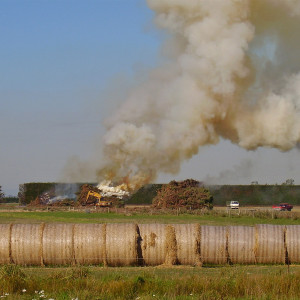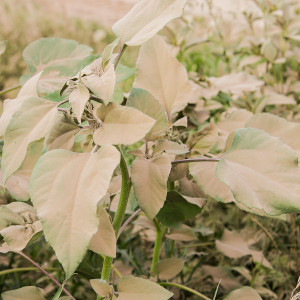Localised effects of discharges to air
Localised discharges (where the source of the emissions can be identified) can impact air quality.
Here are some of the issues we face in Canterbury/Waitaha in relation to the localised effects of discharges to air.
Issue: Discharges of contaminants can impact our health and cause nuisance effects
A localised adverse effect relates to activities and processes that discharge smoke, odour, dust, agrichemical sprays and other contaminants.
If these are not effectively managed, discharges into the air can result in adverse effects on human health and wellbeing, and result in nuisance effects on people’s enjoyment of their living and working environment. However, in rural areas, amenity values (natural or physical qualities and characteristics of an area that contribute to people's appreciation of its pleasantness, aesthetic coherence, and cultural and recreational attributes) can be expected to be different from urban areas. This is because standard farming practices which may produce dust or odour are recognised as typical of the rural environment (such as ploughing a paddock or odours from silage).
These impacts can be magnified where reverse sensitivity takes place – this is where a new development encroaches on existing activities that include discharges to air, where the new development is sensitive to those discharges.
Smoke

Outdoor burning in both urban and rural areas is a major source of complaints. Farm burn-offs in rural areas tend to be well managed, but when burn-offs occur near residential areas, reverse sensitivity effects can arise.
Complaints have been received because of the outdoor burning of waste (such as tyres, plastic and treated timber). Where these cases have occurred, we have taken enforcement action.
Odour
Odour is a major source of the complaints we get. From July 2020 to June 2022, we received 2962 complaints (this period of time coincided with the ‘Smelt-it’ app campaign, where we promoted an app that enables the public to report to us when they experienced air odour).
Recently, there has been a significant number of complaints relating to the fire and subsequent odour issues from the Christchurch City Council Bromley wastewater treatment plant in Christchurch/Ōtautahi.
Within the rural environment, odour generated by intensive farms has also been an emerging issue in recent years.
Odours in the environment are mostly considered a nuisance as they affect the enjoyment of the outdoors, but in more serious cases, they can lead to human health impacts such as lowering quality-of-life and nausea.
Dust
 Human-made dust can be produced by building and demolition work, unsealed roads, land cultivation, and quarrying activities. Natural sources of dust in the region include exposed topsoil (bare land), dry riverbeds, sand dunes, and beaches. These can become airborne as the wind travels over the ground surface, and from human activity (e.g. vehicle movement on roads and unpaved areas).
Human-made dust can be produced by building and demolition work, unsealed roads, land cultivation, and quarrying activities. Natural sources of dust in the region include exposed topsoil (bare land), dry riverbeds, sand dunes, and beaches. These can become airborne as the wind travels over the ground surface, and from human activity (e.g. vehicle movement on roads and unpaved areas).
Dust is a concern for many residents of Christchurch/Ōtautahi. We are currently working with industry and the community to better understand the generation of dust in the northwest area of Christchurch/Ōtautahi, specifically in connection with quarrying activities in the surrounding area.
Updated international and national research, including research from the World Health Organisation (WHO) and the Health and Air Pollution in New Zealand (HAPINZ 3.0) report shows that exposure to dust has the potential to impact public health in a more substantial way than has been previously understood. New evidence shows that there is a strong association between exposure to dust and adverse health impacts. The strength of this relationship depends on the frequency, amount and duration of exposure and the location/distance from the dust source. For more information see Health New Zealand | Te Whatu Ora's air quality webpage.
Dust can also result in nuisance effects, such as the deposition of dust on windows and outdoor furniture, or decrease the visibility of landscape features such as the Southern Alps. Dust collected on vegetation can also adversely impact the ability to photosynthesize.
Current actions or approach
Monitoring the discharge of contaminants into the air is a regional council responsibility under the Resource Management Act (RMA), and in our case, is managed by rules in the Canterbury Air Regional Plan (CARP) and through the resource consent process.
The National Environmental Standards For Air Quality (NES-AQ) also includes regulations aimed at minimising further contribution of PM10 in polluted airsheds. We continue to monitor our reporting app ‘Smelt-it’.
Activities that cause discharges to air resulting in the need for health and safety considerations within workplaces are often managed by other industry-focused legislation, regulations and standards, which we do not administer.
